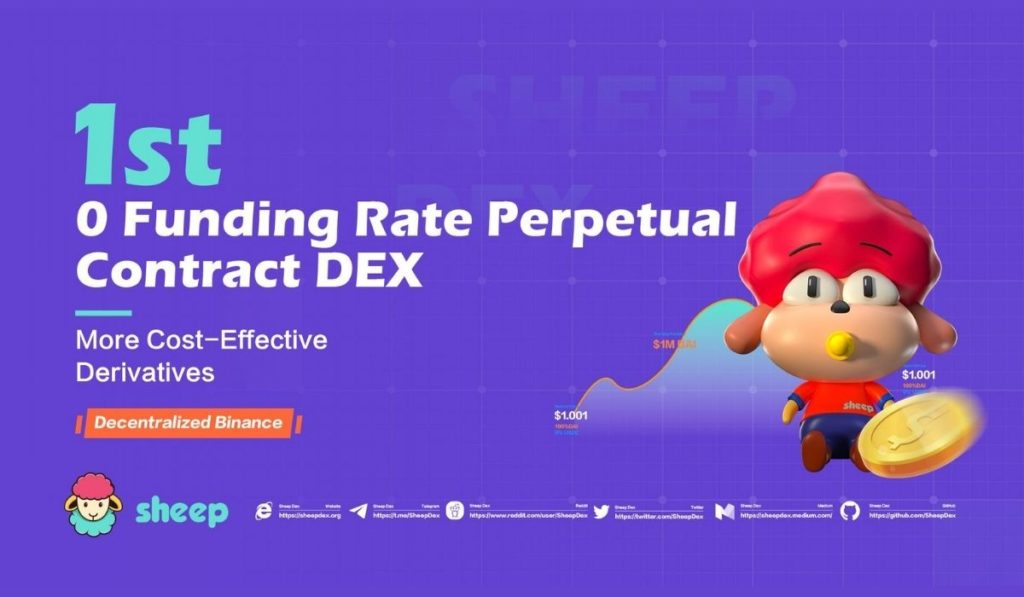
2021-8-24 14:05 |
There are two major trends in the encrypted currency market in 2020. One is the outbreak of derivatives trading on centralized exchanges at the beginning of the year, with positions in bitcoin futures contracts rising 248.15% from about $2.7 billion to about $9.4 billion. The second is that the DeFi agreement has been moderately applied in the second half of the year, with loan agreements and AMM DEX becoming the dominant products, and the total lock-up volume has increased from US $670 million to US $14.5 billion, an increase of about 210%. In the new round of DeFi market growth, decentralized derivatives have become a popular track. Data on the chain show that in the DEX trading volume ranking on August 18, Perpetual and dYdX made the top 10 at the same time, with daily trading volume of more than $200m. With the improvement of the performance of Ethernet Square and the adoption of Layer 2 solutions, the trading experience of protocols such as dYdX has taken a bigger leap forward than before. There is no need to pay Gas fees for every operation, and real-time trading is supported, which makes the derivatives protocols on the chain have a similar experience to the centralized Exchange (CEX). At the same time, options agreements on the chain such as Opium, Hegic and Shield Protocol are also developing rapidly. SheepDex has put forward an innovative trading model of “perpetual contract”, which allows users to capture benefits while reducing risk.
DeFi derivatives have covered future, option, and index, and a variety of innovative mechanisms have been launched.
At present, DeFi derivatives already cover future, option, index, and other products. Among the observation samples selected by PAData, future is one of the earliest DeFi derivatives. DYdX was launched in April 2019, even earlier than Compound. Futures agreements usually only involve the buying and selling of the underlying contracts, but compared with the futures products provided by CEX, futures contracts are two-way leveraged contracts, and users can hedge the risk of spot positions and the spot they are about to receive in the future. At present, the hottest futures contract is Perpetual Protocol, which has an average daily trading volume of about $100 million so far this year, according to Dune Analytics, which is higher than other futures contracts. The emergence of the options contract is basically after the second half of 2020, of which only the Opyn was launched in February 2020, which is an early product. At present, the product form of options contract already includes options, hedging options contracts, option stability currencies and structured products. Among them, protocols such as Opyn and Siren provide standardized option trading, while protocols such as Hegic and FinNexus provide simplified options that only need to choose direction, quantity, exercise price and holding time. The development of DeFi ecology does not seem to be stagnated by the fluctuations of the market. In this new field, various types of infrastructure have been gradually established. In the growth period of this round of DeFi market, the field of decentralized derivatives trading ushered in large-scale development. The trading volume of DeFi derivatives protocols, from the trading volume of the few three protocols included by DeBank and Dune Analytics, the trading volume of DeFi derivatives is far less than that of CEX derivatives. According to July 13 data, futures contracts Perpetual Protocol and dYdX traded about $54.883 million and $28.3088 million, while index contract PowerPool traded about $83,000, total less than $100m. If estimated on the basis of the average trading volume of the three contracts, the total trading volume of the 21 DeFi derivatives contracts in the observed range for the day is about $583 million, which is still much lower than the total daily trading volume of CEX derivatives. The trading volume of the DeFi derivatives contract is not only much lower than that of CEX in horizontal comparison but also the spot/derivatives trading structure of DeFi is more unbalanced than CEX even from the vertical comparison.
According to statistics, the spot trading of CEX is about 25.52 billion US dollars, and the trading volume of derivatives is about 57.843 billion US dollars, accounting for 30.61% and 69.39% of the total daily trading volume of CEX, respectively. The trading pattern (spot/derivatives) is close to 3:7. DEX’s spot trading volume is about $3.37 billion, while the estimated derivatives trading volume is about $583 million, accounting for about 85.25% and 14.75% of DeFi’s total daily trading volume, respectively, and the trading pattern (spot/derivatives) is close to 8.5 / 1.5.
CEX Derivatives are restricted by Regulation, SheepDex gets the opportunity
During the rise of DEX such as Uniwap last year, there was a lot of talk about whether DEX would threaten or even replace centralized exchanges. At present, Uniswap has a trading volume of more than $6 billion a day at peak times, which is still a far cry from the size of the top CEX, but it does take away a lot of the cake. Now the rise of derivatives deals on the chain has once again led to similar conjecture. SheepDex is a BSC-based protocol designed to facilitate automatic exchange transactions between BNB and BRC20 token digital assets. SheepDex is designed for ease of use, high capital utilization, censorship resistance, and high times contract trading. So what SheepDex first do is to bring range liquidity supply to BSC, which will greatly improve the capital utilization rate and increase the trading volume on BSC. Moreover, the overall APR on BSC can be improved due to the increased transaction volume. Secondly, SheepDex will optimize the supply of range liquidity, providing the LP staking to get token rewards, so that users can get more liquidity incentives. SheepDex will then dig deeper into derivatives. Perpetual contracts without funding rates are already being tested. It is well known that perpetual contracts have funding rates, which is charged every 8 hours according to the long-short ratio. The adoption of the funding rate is an innovation in the blockchain industry. Because of the existence of funding rates, it has created a derivatives market that will never be delivered but the price can anchor the spot. The funding rate is mainly used to ensure that the contract price is consistent with the spot price. When the contract price is higher or lower than the spot price, as the price deviates, the long-to-short ratio becomes unbalanced, and the funding rate will continue to erode the user’s funds. Through this mechanism, the accuracy of the price is guaranteed. In addition, because of the existence of the fund rate, when the price rises or falls, there will be more funds entering into SheepDex to earn the fund rate, thus providing better liquidity.
SheepDex Website: https://SheepDex.org
SheepDex Twitter: https://twitter.com/SheepDex
SheepDex Telegram: https://t.me/SheepDex
Open Trading Network (OTN) íà Currencies.ru
|
|





